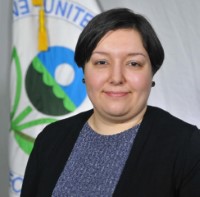 Per- and Polyfluoroalkyl Substances (PFAS) Contamination in Materials Used to Collect, Prepare, and Analyze for PFAS in the Environment
Per- and Polyfluoroalkyl Substances (PFAS) Contamination in Materials Used to Collect, Prepare, and Analyze for PFAS in the EnvironmentPolyfluoroalkyl Substances (PFAS) in the Environment (Session 4)
Oral Presentation
Prepared by D. Kleinmaier1, L. Zintek2
1 - USEPA - Region 5 laboratory, 536 S. Clark St., Chicago, IL, 60605, United States
2 - US EPA - Region 5 laboratory, 536 S. Clark St., Chicago, IL, 60605, United States
Contact Information: kleinmaier.danielle@epa.gov; 312-353-9771
ABSTRACT
The presence of per- and polyfluoroalkyl substances (PFAS) in common household items as well as in materials regularly used to collect, prepare, and analyze for PFAS in the environment is widely acknowledged in the analytical community. The extent to which the presence of PFAS in certain common laboratory materials, such as consumables, can contribute to background contamination has not yet been thoroughly understood. The extent and characterization of this contamination is essential to understand the quality of PFAS analytical results.
The US EPA Region 5 laboratory has been analyzing PFAS in aqueous and solid matrices for several years using American Society for Testing and Materials (ASTM) Standards D7979 and D7968, direct injection liquid chromatography tandem mass spectrometry (LC/MS/MS) methods utilizing external standard calibration and minimum sample preparation. However, it wasn’t until July 2020 that a PFAS contamination problem was discovered in batched quality control samples. Since then, the laboratory has been engaged in fully investigating what has turned out to be significant sources of PFAS contamination present in method-prescribed laboratory consumables such as sampling containers and autosampler vials. Data will be presented tracking the sporadic and inconsistent contamination, in terms of concentration and PFAS analytes identified during the effort. In addition, tools for PFAS bench chemists, data users, and project managers to help combat the problem and to ensure that data of known quality is produced will also be presented.

